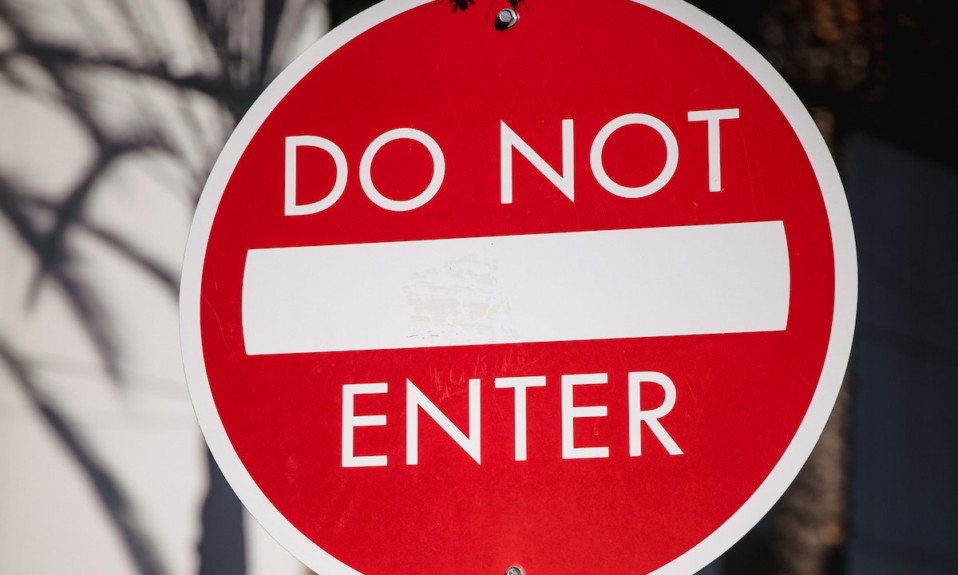It’s become a hot topic in treatment circles following the release of new guidelines that expand access to the opioid addiction medication buprenorphine
By Mark Mravic
Medication-assisted treatment (MAT) has been a boon in dealing with opioid use disorder (OUD). Study after study has shown that MAT reduces overdose deaths and keeps patients in treatment. The emergence of buprenorphine, either on its own (Subutex) or with the blocker naloxone (Suboxone), gave providers another effective weapon to combat addiction. Buprenorphine treatment, when successful, allows patients to return to the mainstream, recovering their jobs, their families and their sense of self. Yet its availability has lagged behind the need—in some places by a wide margin. Part of that gap has to do with healthcare infrastructure, especially in rural settings, but there’s another issue of concern: fears over diversion.
In its broadest sense, diversion is any intentional disruption of a drug’s path that reroutes it from its intended use. Among the ways a prescription drug can be diverted are:
- Theft
- Sharing or selling of medication
- Stockpiling for later use or at a higher dose
- Taking it in a way other than prescribed—snorting or injecting, for instance
- Failing to store it properly, leading to loss, theft or misuse by a family member
- Doctor shopping or forged prescriptions
- Supplementing legal prescriptions with street drugs
Healthcare facilities, treatment centers, private physicians and pharmacies that follow best practices have strict procedures to address diversion, whether among staff or patients. But encompassing as it does such a large array of activities, diversion can be difficult to track or combat. All of that plays a part in driving misuse and its associated ills—crime, social disruption, addiction, overdose deaths. On a national scale, diversion contributes to health crises like the opioid epidemic, with its thriving and insidious black market for powerful prescription painkillers such as OxyContin and fentanyl. At the individual level, it signals a willingness to violate the provider-patient relationship, and can lead to discontinued treatment.
Recognizing that there’s a risk for diversion, it’s not as concerning when, on the other hand, you’re thinking the person might die if they keep using the drugs they’re using.”—Annie Peters, NAATP
The diversion dangers of drugs like OxyContin and fentanyl are evident. But buprenorphine is paradoxical. “With any drug that’s prescribed, there’s always a risk that it can be misused and diverted, and probably will be to some extent,” says Annie Peters, director of research and education at the National Association of Addiction Treatment Providers (NAATP). But unlike many other diverted prescription drugs, the strong consensus among researchers is that most people use diverted buprenorphine primarily for its intended purpose—that is, for its therapeutic, rather than its euphoric, effects. What’s more, studies have shown that a significant percentage of people who use diverted buprenorphine would rather be acquiring it legally, in treatment and with a prescription. Understanding that paradox is important for the treatment community.
Diversion Statistics
A 2018 report by the National Institute on Drug Abuse (NIDA) noted that “the majority of buprenorphine and methadone misuse (use without a prescription) is for the purpose of controlling withdrawal and cravings for other opioids, and not to get high.” According to the study, “methadone and buprenorphine together make up just 15 percent of diversion reports nationally, while oxycodone and hydrocodone account for two-thirds. And buprenorphine related emergency room visits are far below those for other opioid products.”
A further 2018 study in Drug and Alcohol Dependence surveyed 303 people with OUD and found that 58% reported using diverted buprenorphine at least once. Their motivations were enlightening. “The most common reasons for illicit buprenorphine use were consistent with therapeutic use: to prevent withdrawal (79%), maintain abstinence (67%), or self-wean off drugs (53%),” the authors write. “Approximately one-half (52%) reported using buprenorphine to get high or alter mood, but few (4%) indicated that it was their drug of choice.”
A deeper dive into that study reveals the motivations for use of diverted buprenorphine. Among respondents’ reasons:
- “It’s difficult to find a doc that is taking patients. Or have to wait a year for a new patient appointment”
- “Costly to see a doctor who would prescribe it even with insurance”
- “Hard to get into program, long waiting lists”
- “It usually comes down to money [since] some doctors are cash only to get into their Suboxone program”
Tellingly, the study found that 81% of respondents with a history of using diverted buprenorphine said they’d be encouraged to get a prescription if access were easier. “If it wasn’t so hard to get legally,” one respondent said, “there would most likely be more people taking it and getting cleaned up than people taking drugs.”

The authors conclude that “diversion was partially driven by barriers to access, and an unmet need for OUD treatment persists.” That backs up an earlier study in Drug and Alcohol Dependency that found that “the strongest predictor [for diverted buprenorphine use] was attempting but failing to access buprenorphine treatment.”
The Dangers of Diversion
This isn’t to say buprenorphine diversion isn’t dangerous, especially to those who are “opioid naïve”—that is, those who lack tolerance to opioids. The New York Times ran a series in 2013 that grimly recounted overdose deaths related to buprenorphine, as well as the rise of pill mills (mirroring the earlier experience with OxyContin) and the questionable business practices of the company that held the patent for Suboxone (and which was later fined a then-record $1.4 billion for fraudulent marketing of the drug).
And a 2016 Times opinion piece, “Addicted to a Treatment for Addiction,” detailed serious issues with buprenorphine diversion in rural Appalachia. Still, that story noted, “The problem is the plethora of cash-only Suboxone clinics that operate without proper counseling or monitoring procedures.”
Tales of tragedy are gripping, success stories less so—and data hardly at all. But even in news pieces that paint the bleakness of the opioid crisis and detail the black market in buprenorphine, subject after subject speaks of the literally life-saving benefits of the drug, whether taken legally or obtained on the street.
There may be people who obtain a prescription with the sole desire to divert it, but I think most people who seek treatment have a true desire to get better.”—Gregory Hobelmann, Ashley
Perhaps reflecting the paradox surrounding buprenorphine, the Times itself seems to have changed its view of the medication. After its scare stories of the early 2010s, coverage began to swing the other way. In 2019 the editorial board came out strongly in favor of expanding buprenorphine access, based on “the balance of scientific evidence.”
“The people diverting and/or using buprenorphine have OUDs, and recovery is usually not a smooth process,” says Gregory Hobelmann, M.D., MPH, joint CEO of Ashley treatment center in Havre de Grace, Md. “This is not unique to opioids. I think there’s a desire … to get better, but it is not easy. There may be people who obtain a prescription with the sole desire to divert it, but I think most people who seek treatment have a true desire to get better.”
How to Combat Diversion
Still, as access to buprenorphine expands following new guidelines put in place by the Biden administration, so to, inevitably, will diversion—in raw numbers at least. So how to combat it? Unlike methadone, which typically has required daily visits to a clinic to receive a dose, buprenorphine can be a take-home medication, and the provider might regularly see the patient only every few weeks or once a month. This makes buprenorphine a more attractive treatment for patients, as it means less disruption to daily life. But it also makes diversion easier. Add the telehealth options that have widened during the COVID-19 pandemic (and are likely to continue beyond it), and the challenge mounts.
That’s where monitoring and support come in. “If the medication is being given with wraparound services, it should reduce the chance of diversion,” says Peters. Among the methods to address diversion:
- Supervised dosing. This is easier in a controlled environment like residential treatment, where providers can watch medications being administered. Online monitoring—such as apps that allow patients to video themselves taking their medication, or that connect with electronic pill dispensers—could offer promise for remote supervision.
- Urine samples. Unlike a drug test at job, it’s the presence of the drug that allows a patient to pass in this case. Absence of buprenorphine indicates the person isn’t adhering to the treatment, and may be diverting the drug. Urine sampling can be done during a scheduled visit, or it can be unannounced—requiring the patient to come in within a specific time frame, say 24 hours.
- Pill counts. Again, when patients come in for a visit, they’re asked to bring their pill bottle to show they’re taking the medication as prescribed. This, too, can be done unannounced.
- Prescription drug monitoring programs (PDMPs), which are state databases that can track prescribing and patient behavior—for instance, if a patient is using multiple providers or attempting to get early refills.

Of course, none of these methods is foolproof. Patients who want to can subvert urine samples and pill counts (and even supervised dosing—by “cheeking” their medication, for instance), and the success of PDMPs depends in part on how frequently pharmacists enter their dispensing data.
Providers therefore need to be proactive. That’s where therapy can play a significant role. “You’re listening to the person, how they talk about [their medication],” says Peters. “You’re also talking about triggers. You can get a sense of how compliant they are with their medication.”
Support networks beyond the provider framework are also key in limiting diversion. Educating and involving family members and significant others in the treatment plan is helpful, Peters says, as are peer groups. “Recovery community organizations, peer support, sober coaches—whenever there’s a possibility to involve someone, even if it’s just virtual support, there’s a connection and an accountability,” says Peters.
Despite its successes, MAT still carries a stigma. One particularly harmful aspect of diversion as it relates to buprenorphine, reputationally, may be the persistent conflating of it in the public eye with opioids such as OxyContin and fentanyl, which carry a much greater risk of diverted use (and overdose deaths). For instance, a 2020 study published in the International Journal of Drug Policy found that of 15 pharmacies surveyed in Kentucky—where, according to the Centers for Disease Control and Prevention (CDC), overdose deaths rose by 53.1% in the 12 months through October 2020, second only to the District of Columbia—12 of them limited the dispensing of buprenorphine “by refusing to serve new patients, limiting dispensing to known patients or prescribers, or refusing to dispense buprenorphine altogether.”
Fears of running afoul of Drug Enforcement Administration (DEA) regulations played a part in that reluctance, but the study also notes that the “legacy of aggressive and fraudulent marketing of opioid analgesics (OA) by pharmaceutical companies and physician OA overprescribing undermined pharmacist trust in buprenorphine and in its prescribers.” The authors go on to note, “The escalating local war on drugs may have undermined dispensing [of buprenorphine] by reinforcing stigma against people who used drugs.” In other words, issues over diversion and misuse of the drugs at the center of the opioid epidemic are at times being grafted onto the medications specifically intended to confront that epidemic.
For physicians, too, diversion concerns have fed a reluctance to prescribe buprenorphine. A 2019 study in the journal Substance Abuse reported that just 4% of primary care physicians had gotten the X-waiver to prescribe the medication, and 26% who hadn’t applied for the waiver said that diversion issues were their primary reservation.
So how to counter that perception? “There is great scrutiny surrounding prescribing opioids and other controlled substances, and providers have fear of reprimand if they are not following guidelines rigorously,” says Ashley’s Hobelmann. “Most providers do not treat SUDs and are not experts at doing so, so only a small number of providers have been willing to take on those patients. We can overcome the reluctance to some degree by better educating providers about SUDs, reducing stigma, incentivizing providers to provide treatment for that population, and reducing certain regulations that make treating OUDs burdensome and scary.”
Or as Peters puts it, “Recognizing that there’s a risk for diversion, it’s not as concerning when, on the other hand, you’re thinking the person might die if they keep using the drugs they’re using.”
With buprenorphine, we know that most of what has been diverted has been by people who are seeking it out in order to control their cravings and withdrawals. Based on this information, it follows that if you now provide more treatment of buprenorphine, there will be less of a need to divert it.”—Nora Volkow, NIDA
The New Buprenorphine Guidelines
The new guidelines on buprenorphine signal an evolution in the public perception of the drug, one in which diversion might finally be viewed in its proper context, balanced against the evident benefits. On a practical level, the relaxation of the more onerous prescribing regulations means that more healthcare practitioners will be able to engage in MAT, getting treatment to people who want it. And while that may mean more diversion in raw numbers, it likely will reduce the overall percentage of buprenorphine that gets diverted. The bottom line is saved lives.
“We always need to be aware of whether a change of practice with prescriptions is going to have an effect on diversion,” says Nora Volkow, M.D., director of NIDA. “With buprenorphine, we know that most of what has been diverted has been by people who are seeking it out in order to control their cravings and withdrawals. Based on this information, it follows that if you now provide more treatment of buprenorphine, there will be less of a need to divert it. But we cannot ever become complacent. It’s something that of course we need to evaluate.”
Adds Peters: “It’s always a balancing act—as more prescribers are able to prescribe [buprenorphine], there’s going to be more out there, and more diversion. But there will also be more lives saved. A medication that can be misused is never without risk. But if it saves lives, we need to be offering it, and it needs to be available to anybody who needs it and wants it.”
Top photo: Jason Leung; second photo from top: Christopher Ott; third photo from top: Diana Polkhina














